 |
The Tulagi Scene
October 1942-February 1943
|
|
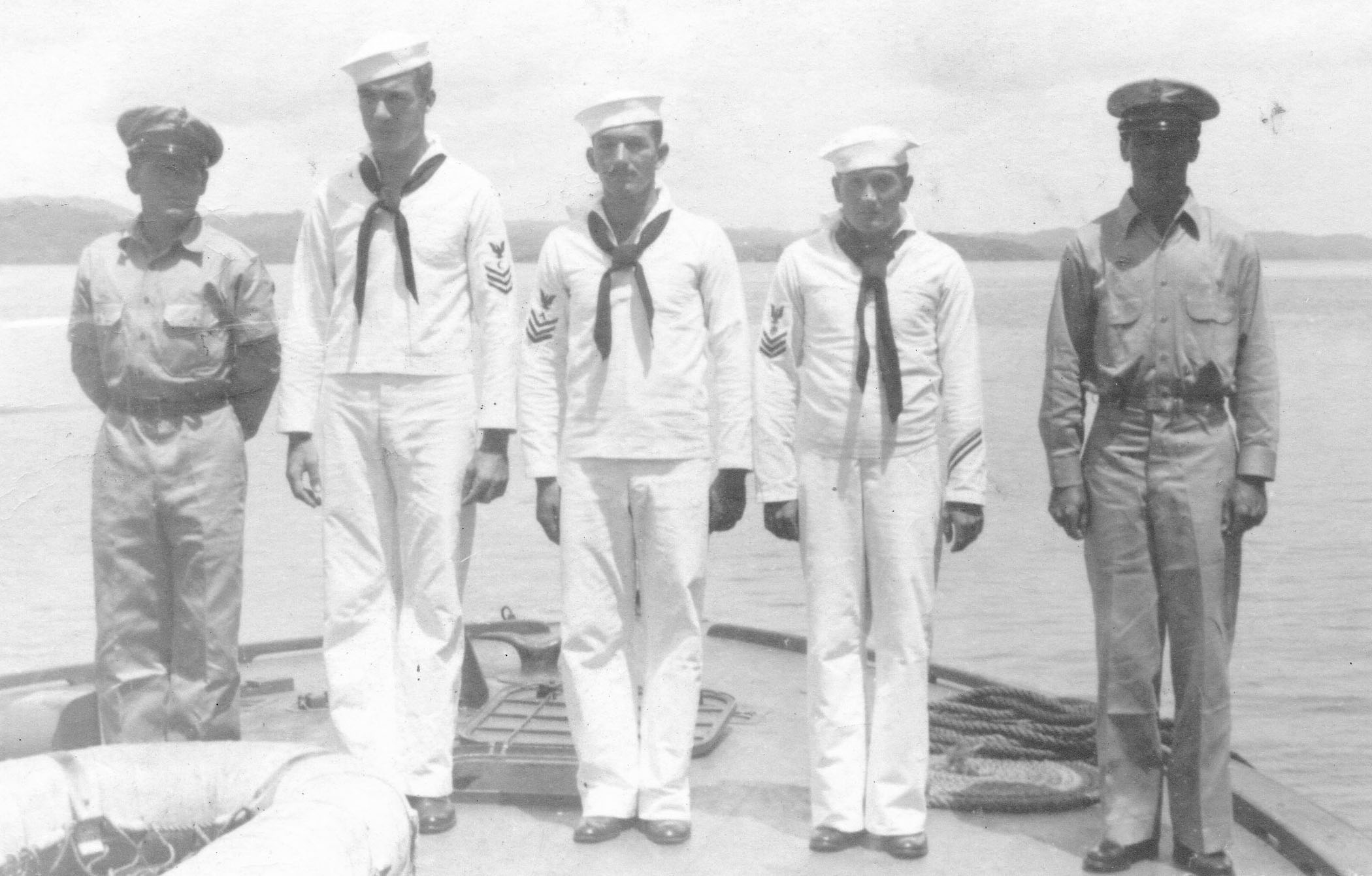
February 17, 1943: Five men of Squadron Three recieve awards for valor for actions during October-November 1942. (L-r): Chief Torpedoman's Mate Alfred Norwood, PT 61; Ship's Cook 1/c Carl Todd, PT 48; Gunner's Mate 1/c Benjamin Parrish, PT 61; Quartermaster's Mate 1/c Lee Bagby, PT 39; and Chief Quartermaster's Mate John Legg, PT 37. (PT Boats, Inc.)
The establishment of a base for the care and feeding of motor torpedo boats at Tulagi began in late September 1942, when Lt. j/g Robert C. Wark arrived on Guadalcanal and reported to Maj. Gen. Alexander A. Vandergrift, commander of the First Marine Division. Lieutenant Wark was from the first section of Motor Torpedo Boat Squadron Three, which was at that moment at Noumea, New Caledonia preparing for transportation to the area. Lieutenant Wark's task was to make the necessary arrangements for the establishment of the new PT base.
After meeting with the Marine commander, Lieutenant Wark later proceeded to Tulagi to call upon Vandergrift's deputy, Brig. Gen. William Rupertus. Accompanying the lieutenant was Comdr. James P. Compton, Commander, Naval Activities, Guadalcanal. Tulagi, the Marine general and the two naval officers sailed to Gavutu to determine its desirability for Squadron Three’s setting up shop—but a quick preliminary survey promptly decided that it would be quite unsuitable for the squadron's new home. The battle to secure the island had been particularly savage; the terrain was thoroughly devastated, the island was too vulnerable to shelling from the sea as well as air attack, and provided any prospective base too little cover from enemy air reconnaissance. One further consideration also eliminated Gavutu from the short list of suitable sites—the presence of numerous, partially exposed and rotting corpses—the remains of Japanese soldiers who had been killed during the fighting.
Returning to Tulagi, Rupertus, Compton, and Wark examined a cove located at a small village on the northeast side of the island. In the days when Tulagi was the seat of British colonial government in the Solomons, the village, spelled in various documents as Sesape, Sesapi, Sasapi, or Sasappi, was a small but thriving Chinese trading town, and had been the center of what passed as the local “shipbuilding” industry, complete with a dock and a marine railway for hauling vessels out of the water for repair.
After the Marines landed in August 1942 and wiped out the Japanese garrison defending Tulagi, very little remained of what once was a blossoming little community. During the battle for the island’s possession, the dock was completely destroyed, burned down to the waterline; the marine railway was demolished; and the native buildings, which were nothing more than shacks made with poles placed upright and topped with V-shaped thatched roofs (home to all manner of native bugs and other assorted critters) had been heavily damaged by shells.
Despite this, Sesape did offer a few advantages. First, it was isolated from the main harbor area, so the PT’s would not interfere with other harbor activities. Second, the base had good protection from wind and heavy seas; third, there was better anti-aircraft protection than other areas that the three officers surveyed. Finally, nature’s own geographic barriers, in the shape of nearby Florida Island, made bombardment from the sea nearly impossible.
Admiral Turner was informed of the new site, and upon his approval, development of the new base began immediately. Improvisation was the word of the day—no construction materials were available, and since Tulagi’s Marine contingent was at bare minimum, the only manpower present to aid in the new base's construction was Lieutenant Wark and 59 men from the 6th Naval Construction Battalion led by Lt. Ben Marcus. The Construction Battalion--the famed Seabees--patched up a large shack and turned it into the engineering shop and warehouse, while a smaller shack, containing a teakwood floor made of three-inch planks, was transformed into the squadron office.
Sometime later, the first shipment of Squadron Three’s supplies arrived from Noumea aboard cargo ship USS Fuller. Because no working parties were available, the job of unloading fell to Lieutenant Wark and the three enlisted men who accompanied the shipment. It was originally thought packed aboard Fuller were the most critical bits and pieces that the PT’s required, electrical and engineering spare parts such as replacement engines, armatures, magneto points, gaskets, propellers, carburetors, struts, shafts, and so on. However, when the gear was unloaded, it was found that the majority were things like salt-water soap, toilet paper, and other GSK (general store-keeping) items—-good for improving creature comforts for the PT crews, but but not so good at keeping their boats afloat and running. The lion’s share of engineering and electrical spare parts—important components critically needed in the weeks to come—were still loaded aboard other cargo ships or in crates on the dock back in Noumea.
The rest of Squadron Three's first division arrived in the early morning hours of October 12, 1942. That day and the next saw the squadron hard at work setting up the new base, concluding the work Lieutenant Wark started in making the place presentable. The base force had the floors of the native shacks, which housed the warehouse, radio hut, engineering shop, and squadron office, reinforced with wood planks and logs. Despite their work, the base remained somewhat austere—at the time there was no drydock, no torpedo compressor, and too few spare parts for the boats. The arrival of the PT tender Jamestown on October 23rd was a partial relief, but her facilities were too limited to sustain any sort of long-term operations. It was plainly obvious that to take care of the additional squadrons and base personnel expected to arrive from the United States, it was important that Tulagi’s shore facilities be improved and expanded.
Supervised by Lt. Jack Searles and Chief Boatswain's Mate Charles Tufts, the Seabees of the 6th Battalion--now increased to 133 officers and men--dredged and blasted an emergency outlet channel for the harbor, to avoid having PT boats bottled up by enemy warships. Two PT boat floating drydocks were assembled from pontoons; a 50-man camp was set up; 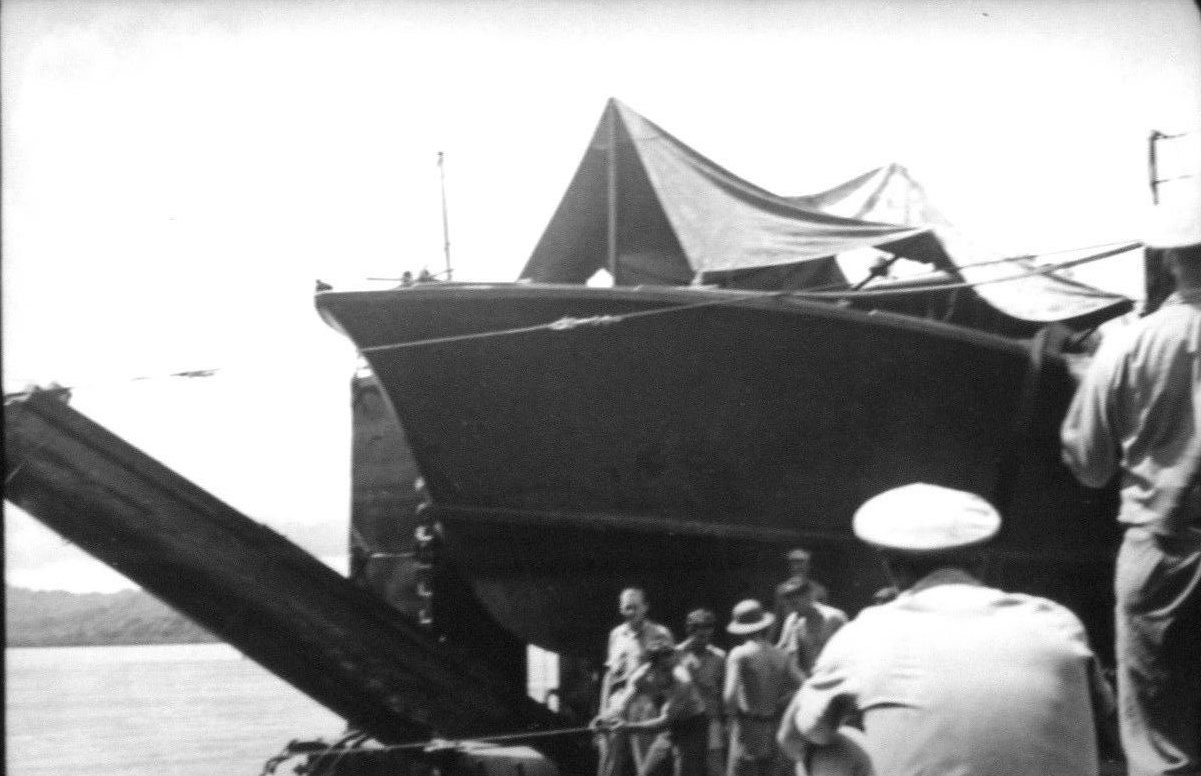 and power and telephone systems to serve the island and harbor area were installed. The detachment also furnished a number of carpenter details to assist with motor torpedo boat maintenance and repair. and power and telephone systems to serve the island and harbor area were installed. The detachment also furnished a number of carpenter details to assist with motor torpedo boat maintenance and repair.
Another item that was urgently needed by the PT force was the radio shack. The ships moored along the bank of the Maliali River nullified the signals from Jamestown's radio; in addition, the high hills behind the PT base blocked direct radio transmission between the tender and boats on patrol. Marine headquarters on Tulagi relayed a resume of the day's intelligence from coastwatchers and air scouts, but could not maintain constant communication with boats at sea. A temporary solution was to use the radio set up by the naval personnel stationed at Government Wharf. With the arrival of more equipment (mostly obtained by barter or "midnight requisitioning") the torpedo boat men were able to set up their own radio shack at Sesape, powered by a former Japanese diesel generator.
The limited supply of 100-octane fuel was another major problem; the precious liquid, in that area more valuable than gold, was divided between the Tulagi PT's and the airmen on Henderson Field. This often necessitated transferring drum gasoline from Tulagi to Guadalcanal. Once the Jamestown's supply of fuel was exhausted, the boats refueled from 55-gallon drums or from the rubber buoys at NAS Tanambogo. When USS Portland was damaged during the Naval Battle of Guadalcanal and laid up for some weeks at Tulagi, the ship generously donated to the PT boats the fuel from her now-useless scout planes as her crew worked to make the damaged cruiser seaworthy.
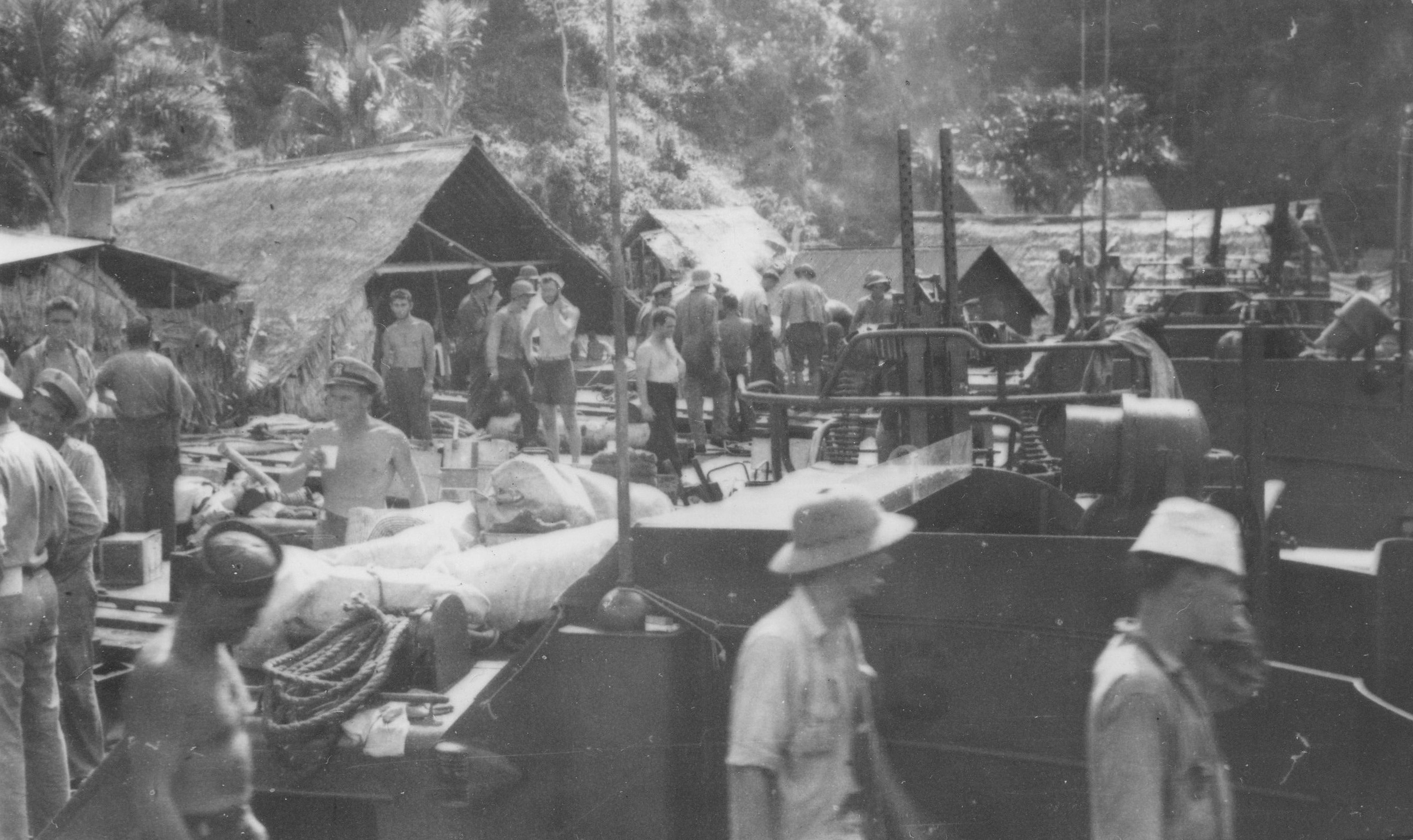
After the arrival of MTB Squadron Two in December, base facilities expanded even more. The PT organization remained fairly small, but the illness and subsequent evacuation of original Ron Three CO Lieutenant Commander Alan Montgomery in November had left Hugh Robinson, (CO Ron Three) and later, Rollin Westholm (CO Ron Two)—who were both Regular Navy lieutenants—as the senior ranking officers. To exercise some administrative control over the PT's in the area as well the additional squadrons that were soon to come, senior Navy officers felt the Tulagi PT’s needed some sort of overall MTB type command, led by a higher-ranking officer. On December 15, 1942, Comdr. Allen P. Calvert, formerly commander of destroyer USS Craven, arrived at Tulagi to establish Motor Torpedo Boat Flotilla One.
In Commander Calvert's honor, the PT base was named after him; over a main street covered with the pierced steel planking called Marston matting, a rude sign was erected that proclaimed in bold letters:
CALVERTVILLE
THROUGH THESE PORTALS PASS THE
BEST MTB FLOTILLA IN THE WORLD
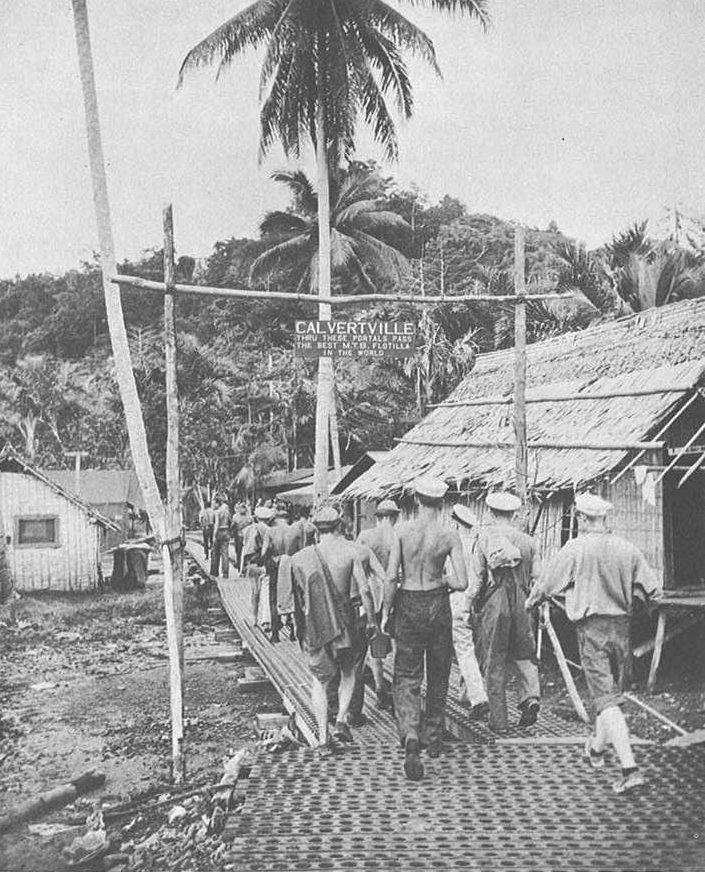
Main entrance to "Calvertville", the Tulagi PT base
The base soon outgrew the initial site on Tulagi, and began to expand across the channel onto the larger spaces of Florida Island. The administrative offices and some living quarters remained on Sesape, while base housing for the current tenants and the squadrons to come was established on Florida. The enlisted men lived in tents, while the officers remained in their humid, roach-ridden quarters on the Jamestown, but not for much longer. Engine shops, torpedo shops, and warehouses were enlarged, and a recreation center and officers club was built. In addition, PT-boat facilities were constructed on the nearby island of Macambo; an existing concrete wharf, in need of repair but still serviceable was used, but it was
necessary to build torpedo overhaul and storage facilities. The sick bay was expanded under the supervision of the squadron doctor, Lt. Emilio D. Lastreto MC, USNR.
Another welcome addition was the presence of the Royal New Zealand Navy, in the form of four corvettes belonging to the 25th Minesweeping Flotilla. Beginning on December 14, Tulagi Harbor was to be the home of these four little ships, whose names were derived from native New Zealand Maori birds and trees: Kiwi, Moa, Matai, and Tui.Their job was to patrol the seas around Guadalcanal for Japanese submarines. The most noted of these four ships was Kiwi, commanded by Lt. Comdr. Gordon Britson. The PT officers would come to know and enjoy the hospitality of this good-humored New Zealander of burly build and impish sense of humor, especially while sampling the wares of his well-stocked liquor mess.
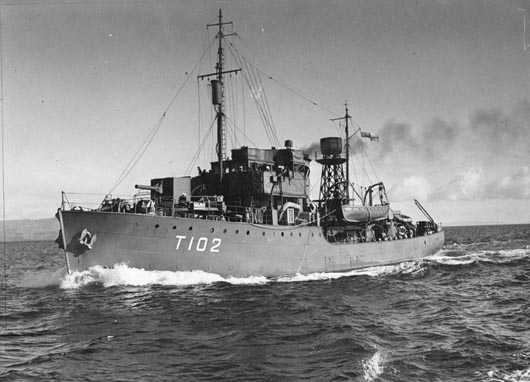
HMNZS Kiwi of the 25th Minesweeping Flotilla.
As December 1942 gave way to January 1943, Tulagi slowly evolved into a major base. MTB Squadron Six arrived at Sesape on New Year's Eve, and in addition to the PT boat units, the New Zealand corvettes, the PC’s, and various other small craft presently operating in the area, nearby Purvis Bay—former seat of the Bishop of Melanesia—was designated a fleet anchorage for light naval forces. On January 19 Tulagi became the temporary home of a destroyer squadron dubbed “The Cactus Striking Force”. Created by South Pacific Force commander Adm. William F. Halsey and lead by Capt. Robert Briscoe, the squadron was nominally composed of destroyers Fletcher, DeHaven, Nicholas, Radford, Balch, and O’Bannon. The destroyers' mission was to coordinate against the Japanese destroyer and submarine transport runs and to conduct bombardments of the Japanese on Guadalcanal. This was vastly different from the harrowing days of October and November 1942, when it seemed the PT’s were the only US Navy fighting ships afloat in the Guadalcanal-Tulagi area.
In the meantime, Commander Calvert endeavoured to fashion his Flotilla One staff into a workable entity, and to assist him in this objective a number of combat officers were pulled from the squadrons. One was Rollin Westholm; another was Hugh Robinson. The two squadron commanders were relieved from duty in Squadrons Two and Three, effective February 1; Westholm became the staff operations officer, while Robinson would be Calvert’s materiel officer. Lt. Allen Harris suceeded “Westy” as Squadron Two's CO, while Lt. Jack Searles took over “Robbie’s” place as Squadron Three's commander.
Also about this time, a serious attempt was made to improve the logistical support of the PT squadrons. The boats at Tulagi were constantly short on spare parts and other equipment; and as new squadrons were expected to arrive from the States, the lack of much-needed supplies would certainly become more acute. To alleviate this problem, Capt. Marcy Mathis Dupre, Jr. was released from duty as executive officer of the battleship Indiana and selected to be Commander, MTB Squadrons South Pacific (Administrative) in mid-January 1943. Dupre's job was to see the squadrons got the necessary equipment they would need to function. Prior to Dupre’s appointment, no one was specifically responsible for PT bases, and the squadron commanders were much too busy handling daily combat operations to spend much time on day-to-day base problems. The inevitable result: boats breaking down for want of maintenance.
Ironically, spares, material, and personnel to maintain the PT’s had already arrived at Espiritu Santo. The first elements of Motor Torpedo Boat Base One, with four officers, 21 men, and tons of equipment and spare parts had been unloaded at Espiritu, but no one informed the PT command of its arrival. Much equipment was "liberated" by other units in the area, and the base personnel assigned to other duties, while PT spare parts—items desperately needed at Tulagi—deteriorated in the humid Solomons climate. Eventually the remnants of equipment and personnel forwarded to Tulagi—but long after the Guadalcanal campaign had concluded. To assist Captain Dupre, Lt. Cmdr. Clifton B. Maddox was detached from MTB Squadron Six. Maddox was previously the squadron's CO, but transferred to shore duty once his outfit arrived in Noumea. Lt. Clark W. Faulkner, who was virtually running the unit in Maddox's abscence, formally became Ron Six's commander.
By February 1943, Tulagi saw the arrival of PT's 117, 118, 125,and 126 of MTB Squadron Six, and five PT's transferred from Squadron Eight to Squadron Two, PT's 144-148. While the men of Squadron Three would depart Tulagi for two weeks of a well-deserved and much-needed rest in New Zealand, Squadron Two's boats would participate in the unopposed invasion of the Russell Islands, screening the transport groups on its approach to the islands the night of 20/21 February. Thereafer, the boats would run regular security patrols, but aside from encounters with floatplanes and a few air raids the PT's in the Russells would have no action with the enemy. In the meantime, the PT's of Squadrons Five, Nine, and Ten were slowly making their way across the Pacific, reaching Tulagi later that spring.
Click on any photo for a larger view
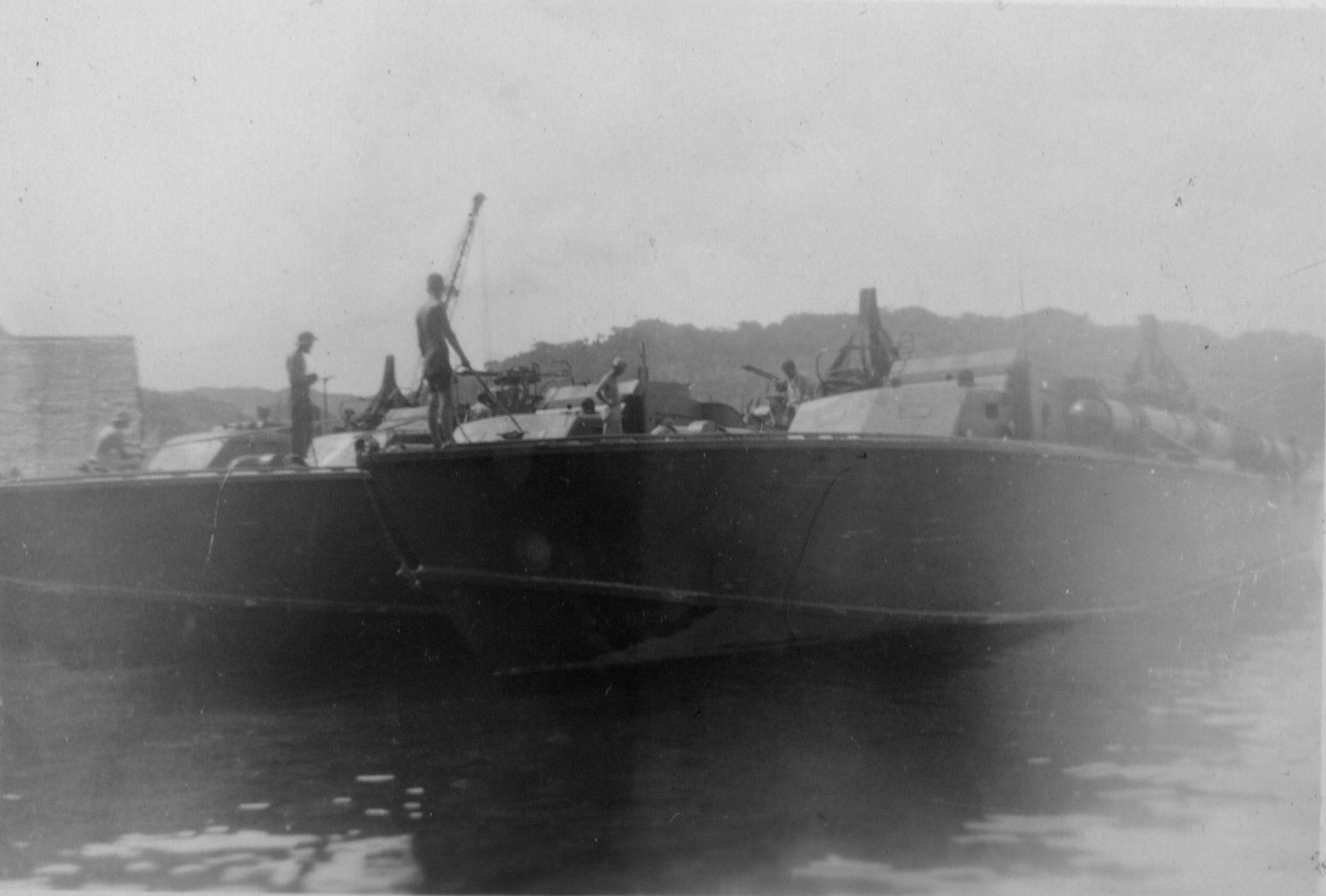 |
 |
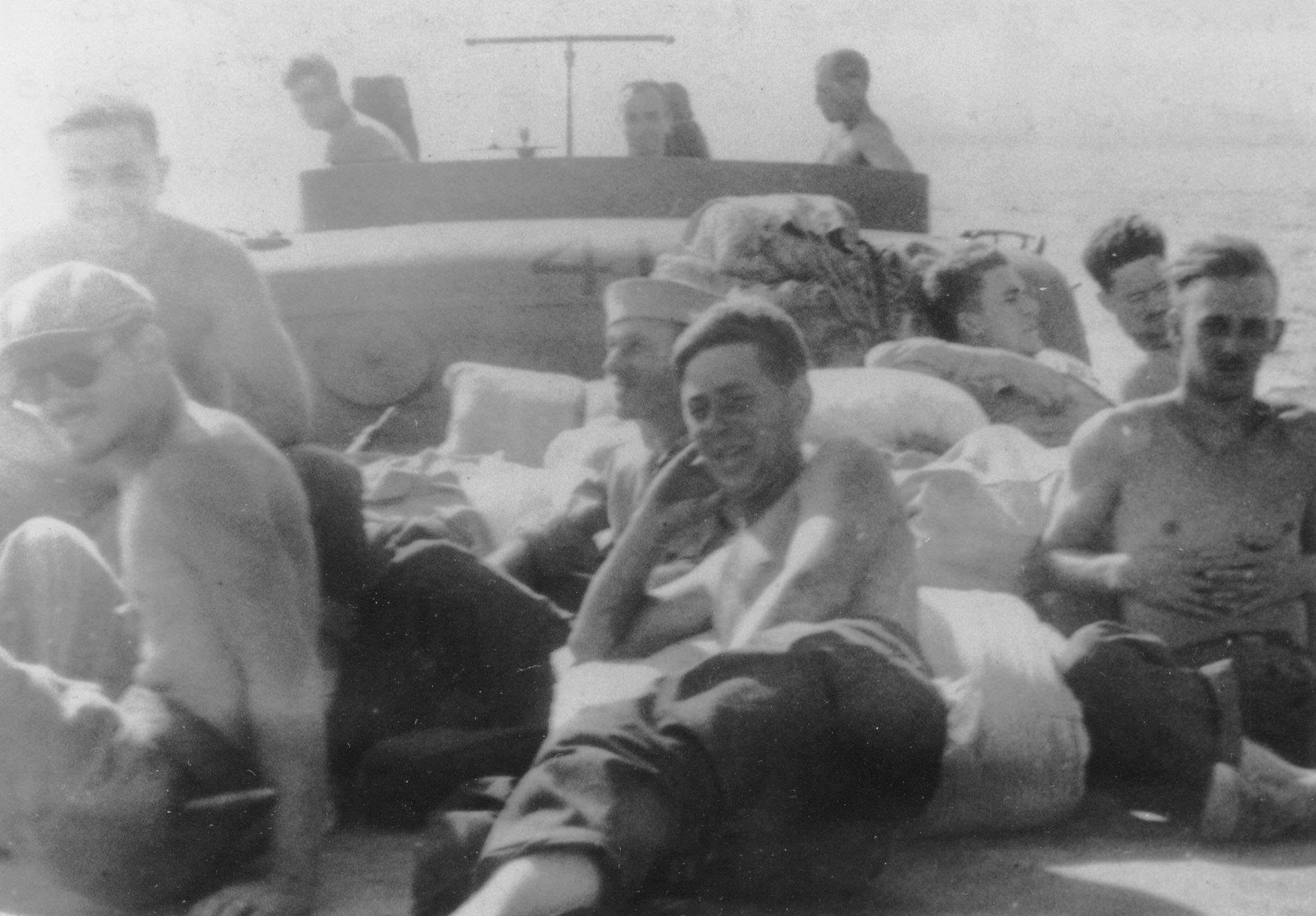 |
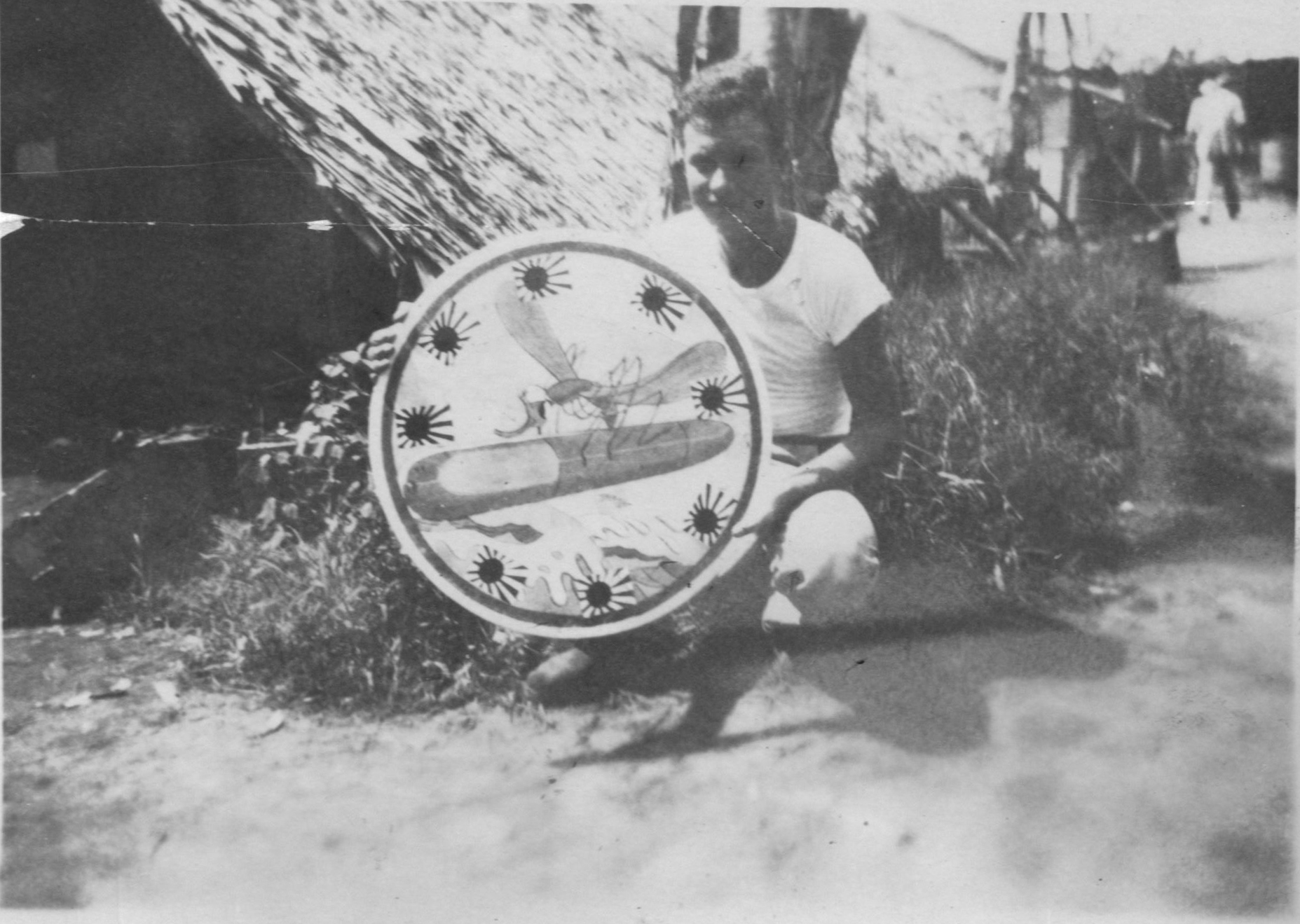 |
 |
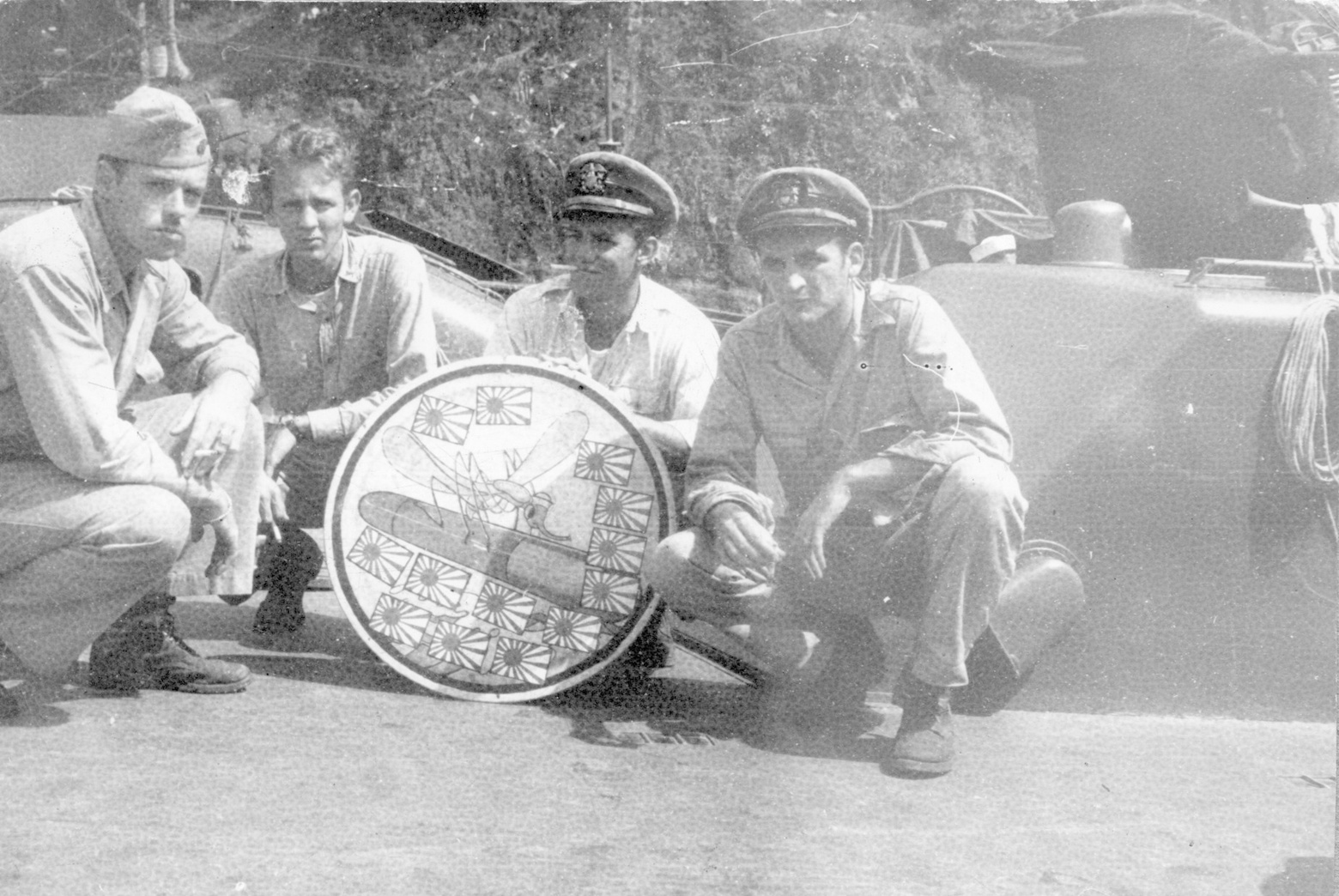 |
 |
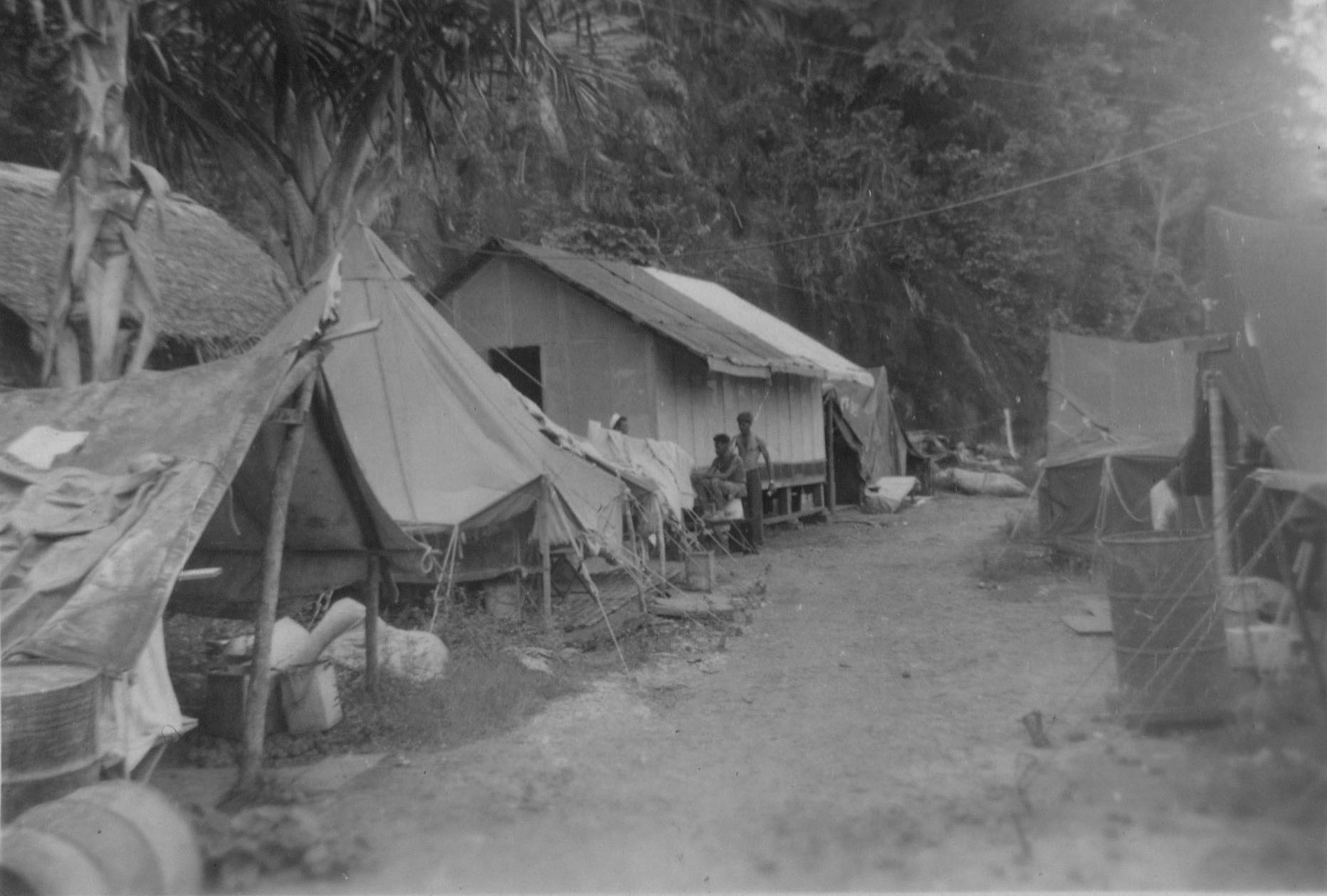 |
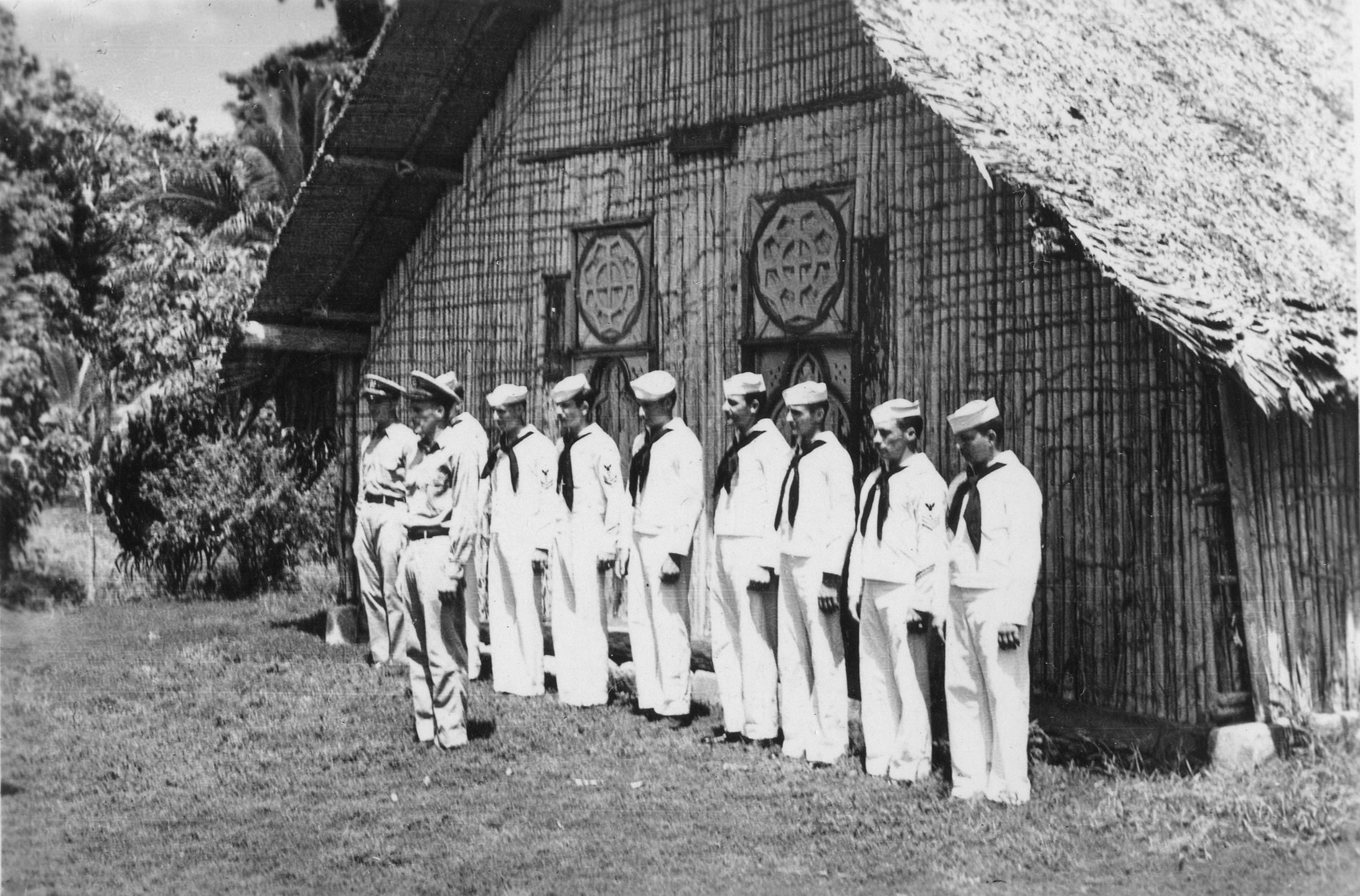 |
 |
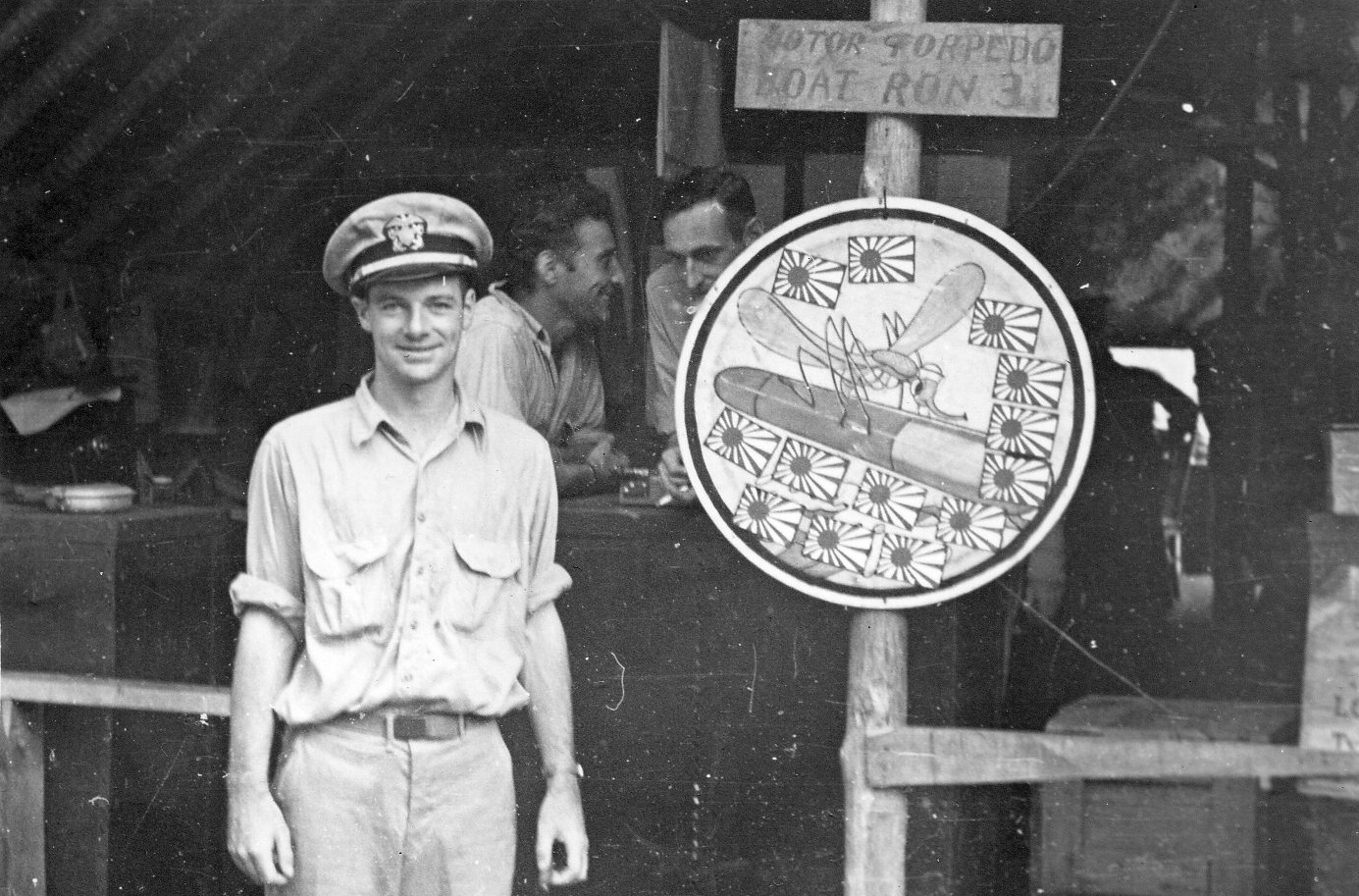 |
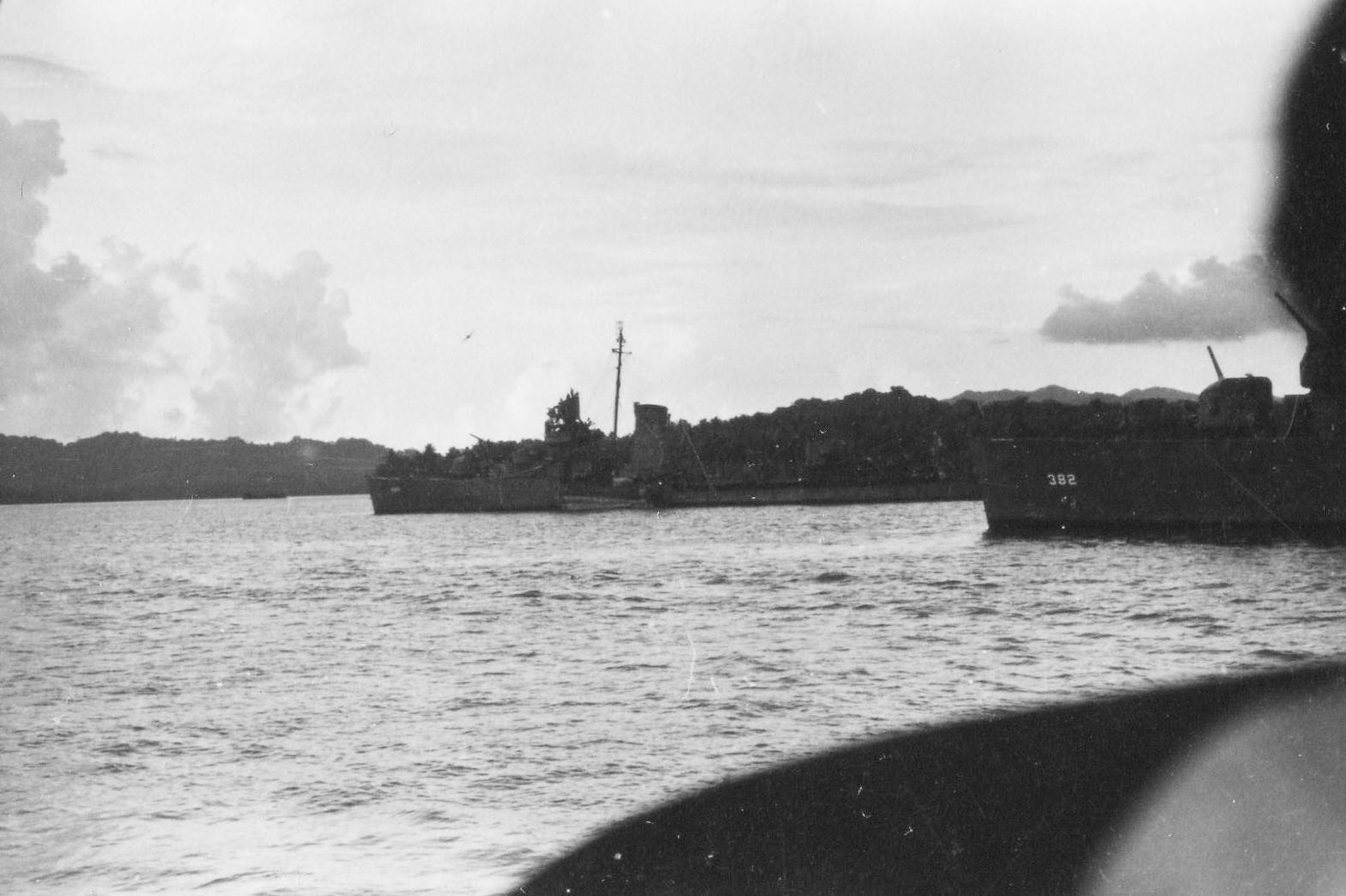 |
|
|
|
|
|
Copyright © 2002-2013 by Gene Kirkland
|